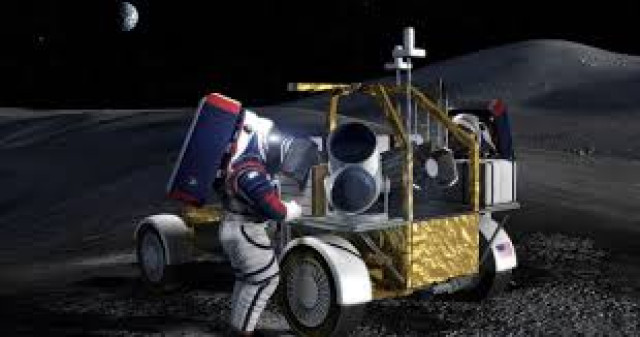NASA has ignited the competition for the next lunar chariot! Three space companies – Intuitive Machines, Lunar Outpost, and Venturi Astrolab – are vying to design the next-generation moon buggy for astronaut exploration. Only one design will be chosen for the prestigious mission, potentially blasting off as early as 2029.
Each company has a year to prove its mettle in a "feasibility phase," culminating in a preliminary design review. This initial hurdle will be followed by a head-to-head battle for a demonstration mission. The victor will not only design the Lunar Terrain Vehicle (LTV) but also oversee its launch and lunar landing before the Artemis V mission.
While the total contract value could reach a staggering $4.6 billion over the next 13 years, specific details of the individual awards remain under wraps. However, Intuitive Machines confirmed receiving a cool $30 million to kick things off.
Secrecy also surrounds the technical specifications, with range and battery technology details kept close to the vest. However, NASA has outlined key requirements: the LTV must be a two-seater, boasting an incredible 10-year lifespan on the unforgiving lunar surface.
Intuitive Machines leads a team of heavy hitters, including AVL, Boeing, Michelin, and Northrop Grumman. Lunar Outpost spearheads the "Lunar Dawn" team, partnering with Lockheed Martin, General Motors, Goodyear, and MDA Space. Venturi Astrolab joins forces with Axiom Space and Odyssey Space Research.
These awards mark a significant step in NASA's ambitious Artemis program, aiming for a permanent human presence on the moon. But before setting up camp, astronauts need reliable transportation. The LTV must be tough enough to handle the brutal lunar south pole environment, characterized by extreme temperature swings and extended periods of darkness.
"Think of it as a fusion of the Apollo-era moon buggy and a modern, uncrewed science rover," explained Vanessa Wyche, director of NASA's Johnson Space Center.
These lunar rovers will be instrumental in scientific exploration. Astronauts will utilize them to transport equipment, collect samples, and venture further than ever before. When human crews aren't moonwalking, the LTV can be remotely operated, allowing continued exploration and even facilitating meet-ups with arriving astronaut teams.
"The Artemis campaign is about building capabilities for a sustained lunar presence," stated Jacob Bleacher, NASA's chief exploration scientist. "There are no roads on the moon – this mobility will revolutionize how we see it."




















